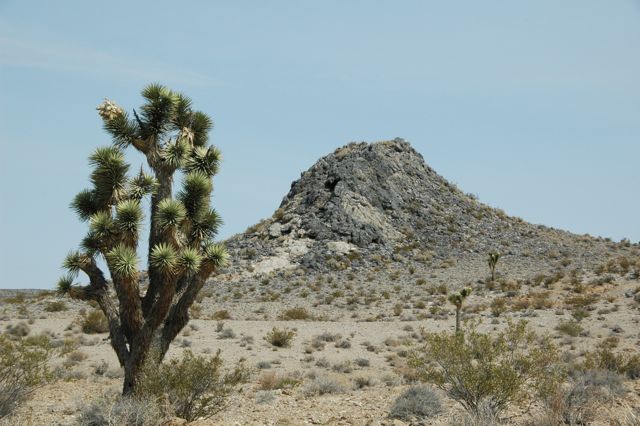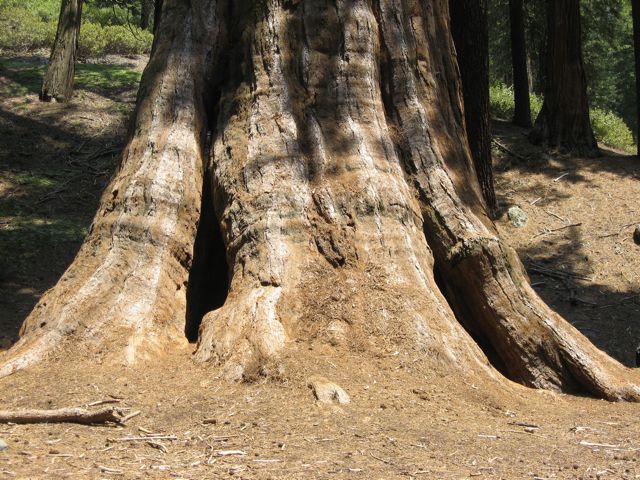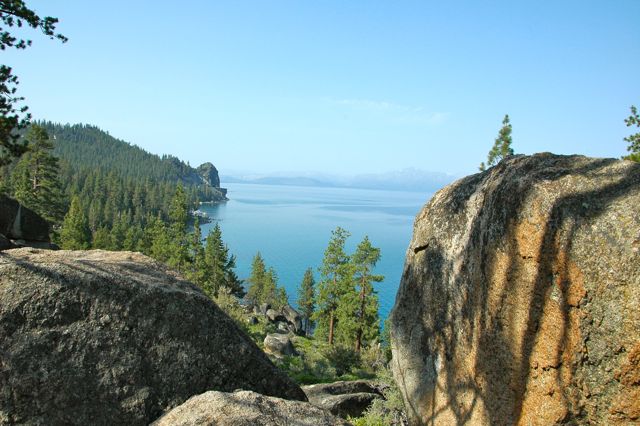Part One of a 14-day, 3300 mile journey through the “Golden West”
By Jean & John Ryan
Part One of Three Parts Click here for photos. A short description is included with individual photos.
After learning about others’ trips to our western national parks and viewing photos of that beautiful area since our childhood, we decided to participate in a bus trip to several national parks of the “golden west.” What a spectacular experience this trip proved to be!
 During our first day, we traveled from Las Vegas through the vast expanse of the Mojave Desert to Bakersfield, CA. Our scheduled visit to Death Valley National Park was cancelled as predicted temperatures for the day there were 130 degrees. As we traveled through the very arid Mojave, we felt we were venturing across an almost moonlike surface. As we neared Bakersfield, we observed hundreds of towering wind turbines rising above a treeless mountain range. We learned that these wind turbines generate power for 600,000 southern California homes.
During our first day, we traveled from Las Vegas through the vast expanse of the Mojave Desert to Bakersfield, CA. Our scheduled visit to Death Valley National Park was cancelled as predicted temperatures for the day there were 130 degrees. As we traveled through the very arid Mojave, we felt we were venturing across an almost moonlike surface. As we neared Bakersfield, we observed hundreds of towering wind turbines rising above a treeless mountain range. We learned that these wind turbines generate power for 600,000 southern California homes.
 Kings Canyon National Park, located in the southern Sierra Nevada Mountains, was our first national park to visit. Here we were able to see many, many giant sequoia trees. Photos simply do not do justice to the mass and size of these enormous trees. The most memorable sequoia we saw was the General Grant, a tree that rises 268 feet in height, is 107 feet in circumference and is believed to be 3500 years old. We also learned that the giant sequoia trees are resistant to disease and forest fires and readily observed several sequoias which were charred by fire up to 35 feet high along their trunks and still thriving.
Kings Canyon National Park, located in the southern Sierra Nevada Mountains, was our first national park to visit. Here we were able to see many, many giant sequoia trees. Photos simply do not do justice to the mass and size of these enormous trees. The most memorable sequoia we saw was the General Grant, a tree that rises 268 feet in height, is 107 feet in circumference and is believed to be 3500 years old. We also learned that the giant sequoia trees are resistant to disease and forest fires and readily observed several sequoias which were charred by fire up to 35 feet high along their trunks and still thriving.
 Our next national park in California to visit was Yosemite with its notable rock formations, alpine meadows, sequoia forests and waterfalls. Here we saw the famous Half Dome, the granite dome that rises 5000 feet above the valley floor, El Capitan, the monolith so many rock climbers have scaled, Bridalveil Falls, and Upper and Lower Yosemite Falls. As we exited Yosemite, we drove through scenic Tioga Pass, the highest pass in the Sierra Nevadas as it rises to nearly 10,000 feet. This pass is filled with panoramic vistas as it travels through mountainous curves, tight bends and dramatic drop-offs.
Our next national park in California to visit was Yosemite with its notable rock formations, alpine meadows, sequoia forests and waterfalls. Here we saw the famous Half Dome, the granite dome that rises 5000 feet above the valley floor, El Capitan, the monolith so many rock climbers have scaled, Bridalveil Falls, and Upper and Lower Yosemite Falls. As we exited Yosemite, we drove through scenic Tioga Pass, the highest pass in the Sierra Nevadas as it rises to nearly 10,000 feet. This pass is filled with panoramic vistas as it travels through mountainous curves, tight bends and dramatic drop-offs.
 Our third day on the bus tour found us in Lake Tahoe. Here we were able to take a lunch cruise on Lake Tahoe where we traversed the waters of this beautiful glacier-carved lake rimmed by the mountains of the Sierra Nevadas and the Carson Range. Later that same day, we visited the once boisterous mining town of Virginia City, a town which looks much as it probably did some 150 years ago. Here the discovery of gold and silver allowed prospectors to become millionaires. Historic buildings including churches, saloons and areas of the former red-light district still remain.
Our third day on the bus tour found us in Lake Tahoe. Here we were able to take a lunch cruise on Lake Tahoe where we traversed the waters of this beautiful glacier-carved lake rimmed by the mountains of the Sierra Nevadas and the Carson Range. Later that same day, we visited the once boisterous mining town of Virginia City, a town which looks much as it probably did some 150 years ago. Here the discovery of gold and silver allowed prospectors to become millionaires. Historic buildings including churches, saloons and areas of the former red-light district still remain.
Leaving the Lake Tahoe/Reno area, we traveled east across Nevada. An interesting stop was the California Emigrant Trails Center, near Elko, NV. Through interpretive exhibits, one learns the experiences of a pioneer wagon company heading west on the Oregon/California trail. As we continued eastward, we passed through the salt flats area, the area that we had just learned about at the interpretive center that had proven so troublesome for covered wagons as they became mired in the salty mud.
Part Two of Three will include visits to Salt Lake City, Arches National Park, Canyonlands National Park and Capital Reef National Park.
Posted: August 24th, 2013 under Education News, Environmental News, General News, Peru resident news/accomplishments, Travel Photos.
